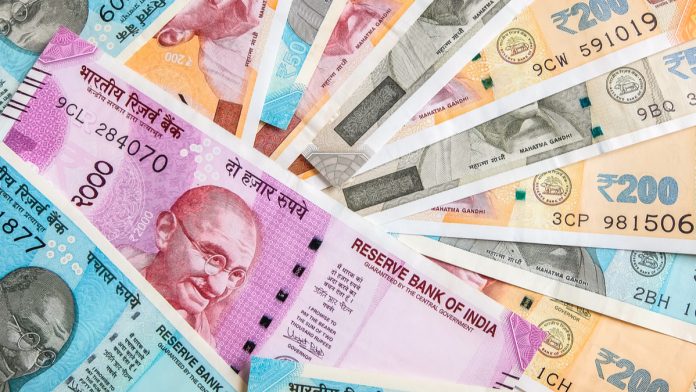- Indian Rupee (INR) holds edges lower but set for weekly gain
- Indian trade deficit widens
- US Dollar (USD) eases tracing treasury yields lower
- US retail sales rise, consumer confidence falls
The US Dollar Indian Rupee (USD/INR) exchange rate is edging higher on Friday snapping a two-day losing run. The pair settled down -0.41% on Thursday at 74.96. At 15:00 UTC, USD/INR trades +0.08% at 75.03. The pair is set to decline -0.16% across the week.
India’s trade deficit widened to record levels in September. The deficit reached $22.6 billion as crude oil and gold imports surged data released by the government revealed.
The widening trade deficit is currently being cushioned by an inflow of foreign funds in the stock at debt market, keeping the Reserve Bank of India calm.
The central bank’s forex reserves rose to over $637 billion at the end of September.
Equally the trade deficit is expected to ease in the coming months, potentially to between $13 billion to $16 billion according to analysts at ICRA the Indian arm of rating agency Moody’s.
The US Dollar is moving lower across the board on Friday. The US Dollar Index, which measures the greenback versus a basket of major currencies trades -0.04% at the time of writing at 94.00, extending losses for a third straight session.
The US Dollar is tracing treasury yields lower as concerns over inflation ease. A strong start to US earning season with blowout earnings from the banks has helped to calm inflation fears boosting market sentiment.
Adding to the upbeat mood US retail unexpectedly rose in September, highlighting the resilience of the US consumer. Consumer hits the shops shrugging off supply constraints, the Delts variant and the end of enhanced benefits. Sales rose 0.7% month on month, after rising an upwardly revised 0.9% in August. Analysts had expected a 0.2% decline in sales.
Interestingly consumer confidence data didn’t match up with the strong retail sales figures. The University of Michigan consumer sentiment figures eased lower in October to 71.4, down from 72.8. Analysts had expected a rise to 73.1.




